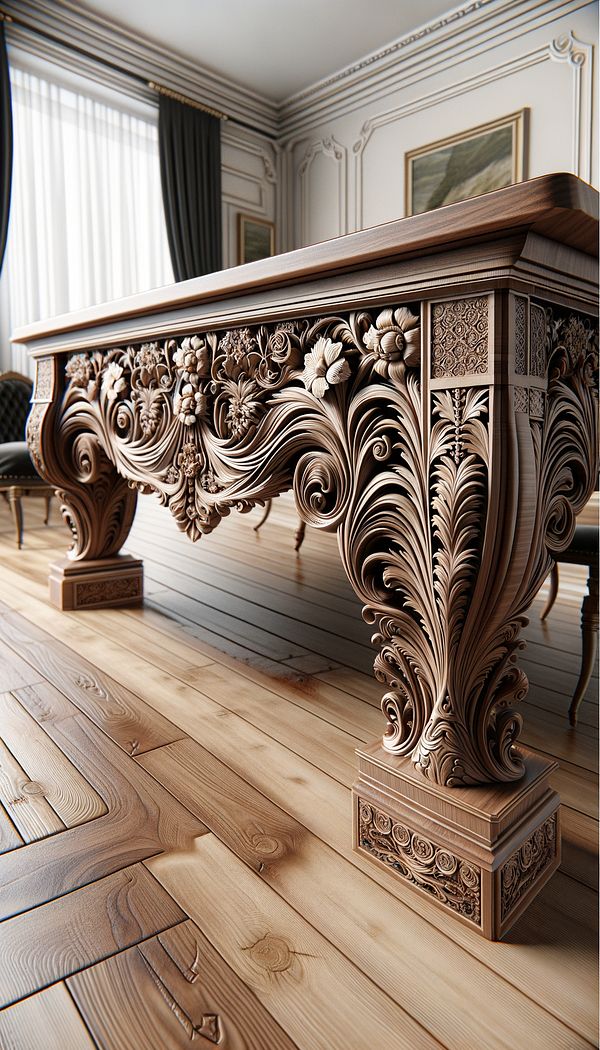What is an Apron?
An apron is a decorative or structural panel fixed beneath a surface such as a tabletop, window ledge, or countertop.
Description
An apron, in the context of interior design, refers to a panel that is usually found beneath the overhanging edge of surfaces such as countertops, tables, or window sills. It serves both a decorative and structural function by providing support to the structure above and adding an aesthetic element to the furniture or space it is part of. The design and style of an apron can greatly vary, ranging from simple and sleek to detailed and ornate, depending on the design style of the interior.
Aprons are often crafted from the same material as the surface they support, creating a seamless look. However, contrasting materials can also be used for a distinct visual impact. For example, a wooden tabletop with a metal apron can add an industrial touch to a room. The apron may also feature various decorative elements such as carvings, moldings, or inlays, adding depth and character to the overall design.
The presence of an apron not only enhances the aesthetic appeal of a piece of furniture but also contributes to its durability and stability by reducing stress on the joints. This makes it an important consideration in furniture design and selection.
Usage
Aprons are commonly seen on dining tables, where they add both stability and a decorative touch to the table's design. In a kitchen setting, aprons on countertops can hide plumbing fixtures and enhance the visual appeal of the kitchen island or counters. Window aprons, while less common, can serve as an elegant finish to window installations, complementing the overall design of the room.
FAQs
-
What materials are commonly used for aprons?
Wood, metal, and sometimes even stone or composite materials are commonly used for aprons, depending on the style and function of the furniture or countertop.
-
Can aprons be added to existing furniture?
Yes, aprons can be added to existing furniture for both aesthetic enhancement and structural support, although it might require professional skills to ensure a proper fit and stability.
-
Do all tables have aprons?
Not all tables have aprons. The presence of an apron depends on the design and style of the table. Some modern or minimalist designs may forgo aprons for a simpler look.
Practical Application
When selecting or designing furniture, consider the apron style and material to ensure it complements the overall design aesthetic of your space. An apron can add a significant decorative element to a piece, so choosing one that aligns with your interior design style can enhance the cohesion and appeal of your room. For a more custom look, consider incorporating decorative elements into the apron such as carvings or inlays that reflect personal tastes or thematic elements of the room.
-
Architectural Elements199 articles
-
Furniture Types599 articles
-
Decorative Techniques322 articles
-
Decorating Principles & Elements330 articles
-
Kitchen & Bath37 articles
-
Diamond TuftingA decorative technique with fabric buttoned into a pattern resembling diamonds.
-
DecoratorIn interior design, a decorator focuses on enhancing the aesthetic appearance of a space.
-
RenaissanceThe Renaissance is a historical period and artistic movement characterized by a revival of interest in classical art, architecture, and knowledge.
-
Drop LeafDrop leaf is a type of table or desk design featuring one or more hinged leaves that can be lowered or raised to adjust the surface area.
-
Split Queen BoxSplit Queen Box refers to a type of bed base composed of two separate pieces designed to support a queen-sized mattress.
